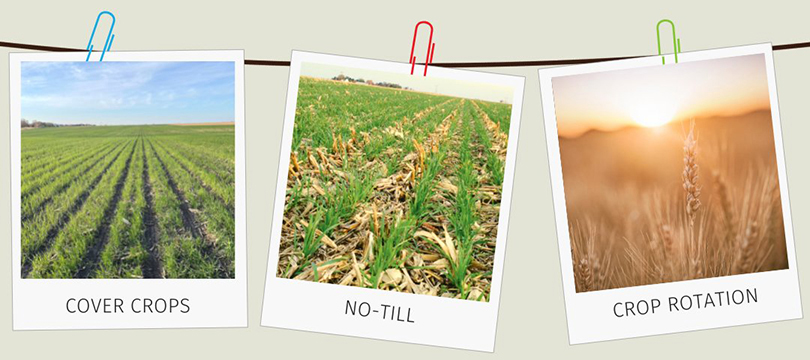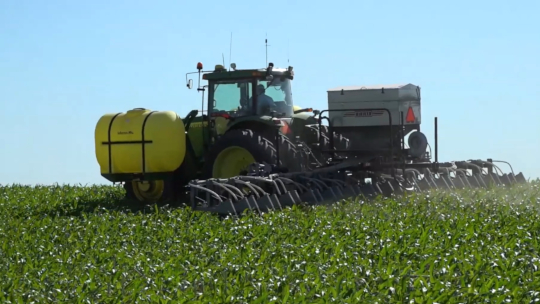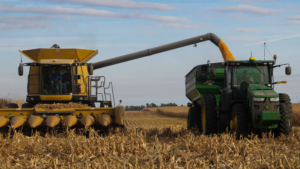Understanding Cover Crops
Weed Suppression: the best way to suppress weeds is with a highly competitive crop that can form a canopy quickly and shade weeds out. Summer annual crops that can form tight, dense canopies and will often outgrow many weeds include sorghum-sudan, forage sorghums, pearl millet, okra, sunflowers, buckwheat, and cowpeas. A mixture of cover crops tends to be more competitive than a monoculture. For example, sunn hemp, although it grows rapidly and gets tall, does not form a dense canopy by itself. Cowpeas can form a dense canopy but do not get tall by themselves. But a combination of sunn hemp and cowpeas allows the viny cowpeas to use the sunn hemp as a trellis, and the cowpeas fill in the gaps between the sunn hemp plants to form a very effective weed suppressing canopy. It may also be helpful to have a mix that can tolerate a herbicide if it comes to that; in that case, you need tolerance to a herbicide that is effective against your target weed. For example, if your target weed is Palmer amaranth, you may want to plant a crop that is tolerant to atrazine or metolachlor used pre-emergence, or 2,4-D postemergence, assuming your weed population is not already resistant to those herbicides. If your target weed is Johnsongrass, grassy sandbur or some other grass, you may want a mix of legumes and broadleaves that allow the spraying of clethodim over the top. If you are waiting to plant until late July or early August, then a combination of both summer annual plants and cool-season plants can be used. Brassicas like turnips, radishes, mustard, and collards are effective at suppressing weeds, and cereal grains like oats and spring barley can suppress winter annual weeds like henbit and marestail from establishing this fall.
If your goal is to reduce weed issues in next year’s crop, then that changes things as well. Cereal rye planted in the late summer or early fall as part of a mix is one of the best weed-suppressing crops if the next crop will be a legume crop like soybeans, as it aggressively ties up nitrogen which leaves none for weeds to use. Soybeans don’t mind, they just fix their own nitrogen. If the next crop is a nitrogen demanding crop like corn, a winter legume like hairy vetch can be used to both produce nitrogen and suppress weeds. Although vetch makes nitrogen when it is terminated the nitrogen is in the form of protein and must be decayed before it is available to either crop or weeds. You can place a little nitrogen in the furrow where the crop can reach it and the weeds can’t to keep the crop well-nourished until the vetch begins to decay. Both rye and vetch can form a thick mulch that can help suppress small-seeded weeds like Palmer amaranth from being able to get to sunlight after germination before they run out of energy. Both rye and vetch contain chemical compounds that stunt weed growth.
Nitrogen Fixation: is best accomplished with a cover crop mix dominated by legumes. The best summer annual nitrogen fixer is sunn hemp, followed by cowpeas, forage soybeans, mung beans, and guar. Again, mixtures are capable of fixing more nitrogen than monocultures in many cases, we recommend mixes containing sunn hemp and cowpea combination for summer nitrogen production as it will produce more nitrogen than a monoculture of either species alone. If you are planting later, as in August, then both cool-season and warm-season legumes are viable. Cool-season legumes include ones that will winterkill in most areas (spring peas, chickling vetch, spring lentils, faba beans, woollypod vetch, common vetch) and ones that will potentially overwinter in the north (balansa clover, hairy vetch, winter lentils) and in the south (crimson clover, arrowleaf clover, woolypod vetch, winter peas). An additional possibility for added nitrogen fixation, particularly if you are using a mixture with non-legume components such as sorghum-sudangrass, is to inoculate with our Bi-Azo inoculant, which is capable of fixing a small amount of nitrogen in the rhizosphere of non-leguminous crops.
Building Soil Organic Matter: as we learn more about how soil organic matter is formed, we are realizing the most important contributor to soil organic matter is the root exudates a plant produces, not the aboveground plant growth. Therefore, the best bet is to produce more days of more exudates, of a diversity of species and plant families, along with as much aboveground biomass as possible. Diversity of plant families makes a more nutritious diet for the microbes that build organic matter, as some species have root exudates high in sugar, others high in protein, others high in lipids, others high in minerals; when combined, it makes a more balanced diet than a monoculture. In general, since the production of root exudates depend on the level of photosynthesis, the more biomass a plant produces, the higher the root exudates. Probably the best single plant for producing organic matter is sorghum-sudangrass, as it produces copious amounts of both root exudates and aboveground biomass. Sunn hemp is probably the best legume. Sunflowers are one of the better non-leguminous forbs. Mixtures with these plants are better than a monoculture of the best single one. Rye, triticale, black oats, and annual ryegrass are some of the better cool-season plants. Another key to building soil organic matter is to have as many days of photosynthesis as possible; thus, even though sorghum-sudangrass is great, it will be done at first frost. If you really want to build organic matter, plant a sorghum-sudan dominated mixture as early as possible, then mow or roll it down in late August and drill a cool-season blend with a high percentage of rye or triticale with annual ryegrass in it, without terminating the summer annuals. This will provide a relay of high root exudate production clear through next spring. Another consideration; if you really, really, really want to build organic matter, then inoculate your first planting with mycorrhizal fungi. The glomalin produced by the mycorrhizal hyphae is the most persistent form of organic matter known and does wonders for the soil.
Provide Grazing after Nov 1: since the prevent plant program allows grazing after November 1, you may want to plant a mixture that has high grazing value at that time. As far as summer annuals go, the best plant for stockpiled winter grazing is probably a sorghum that does not head out. Grain production can be a liability, in that if grazing is not regulated with daily moves of portable fencing, the animals can be subject to acidosis from excess grain consumption. If rationed out with portable fencing on a daily move schedule, a little grain can be desirable. Non-heading sorghums can be one of three types: 1) a photoperiod sensitive that will not initiate a head until after daylength drops below 12 hours and 20 minutes in September, such as our Sweet Forever, or 2) a male sterile product, such as our 400 BMR, with no other pollen producing sorghums in the mix or 3) a long maturity product, especially if planting after July 1 north of I-40 or so, such as our Super Sugar DM (conventional) or Silo-pro (BMR). Another summer annual grass that retains good grazing quality into fall is browntop millet. Summer annual legumes that tend to hold their seeds in the pod after frost to act as a protein supplement include mung beans and guar; sunflower also tends to hold onto its high protein, high oil seeds well into the fall. Stockpiled forage sorghum, especially a BMR, has fair grazing quality in winter but is best suited for a maintenance diet for brood cows rather than growing animals with high expectations of gain. One other option might be to swath the crop (check to see if this is allowed) and leaves the swath in the field for post frost grazing; in this case, just about any sorghum variety will work well. Swathing also allows the drilling of cool-season species after swathing. A final option: spraying a sorghum crop with 2,4-D close to seedhead emergence can sterilize the flowers so no grain is produced. This might be an option is nonheading sorghum varieties are in short supply, and swathing is not allowed. If planting in August, then very few sorghum varieties will produce grain, but can still provide considerable dry matter before frost, but should be blended with cool-season plants for better grazing quality. Most cool-season, August-planted cover crops provide excellent November grazing. The highest yields of fall grazing will come from cool-season spring cereals (spring oats, black oats, spring barley, and spring triticale) and spring pulses (chickling vetch, spring forage peas, spring lentils) along with brassicas such as collards, turnips, rapeseed, and radishes. Cereals and legumes that overwinter provide less fall grazing but can provide spring grazing and/or spring cover and weed suppression, examples include rye, triticale, winter barley, annual ryegrass for grasses, and crimson clover, hairy vetch, and balansa clover for legumes.
Preventing Erosion, then let us know, and we can design a mix for that purpose as well. We have some items that are very inexpensive on a per acre basis, such as sunflowers, rapeseed, a blend of conventional forage sorghums, and our remix biological primer. We also have an occasional “fire sale” on items that may be in danger of losing their germ and we want to get them in the ground before they do so. If your goal is “cheap”, just let us know. These items can also provide grazing as well as many of these other goals we have listed, but likely not as well as a mix designed expressly for that purpose.
Your CPNRD Contact
Dean Krull
(402) 469-0155
dkrull1@unl.edu








